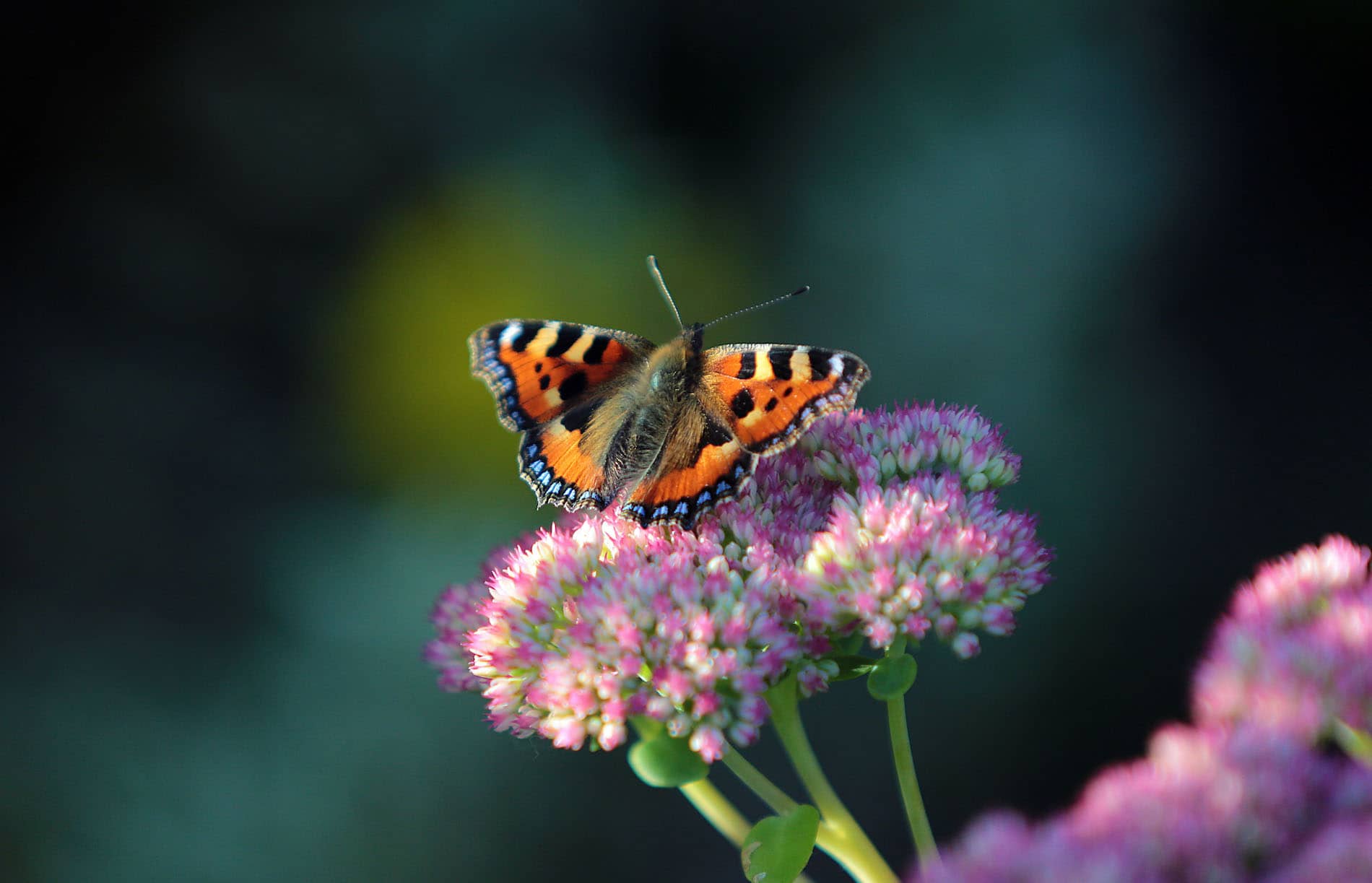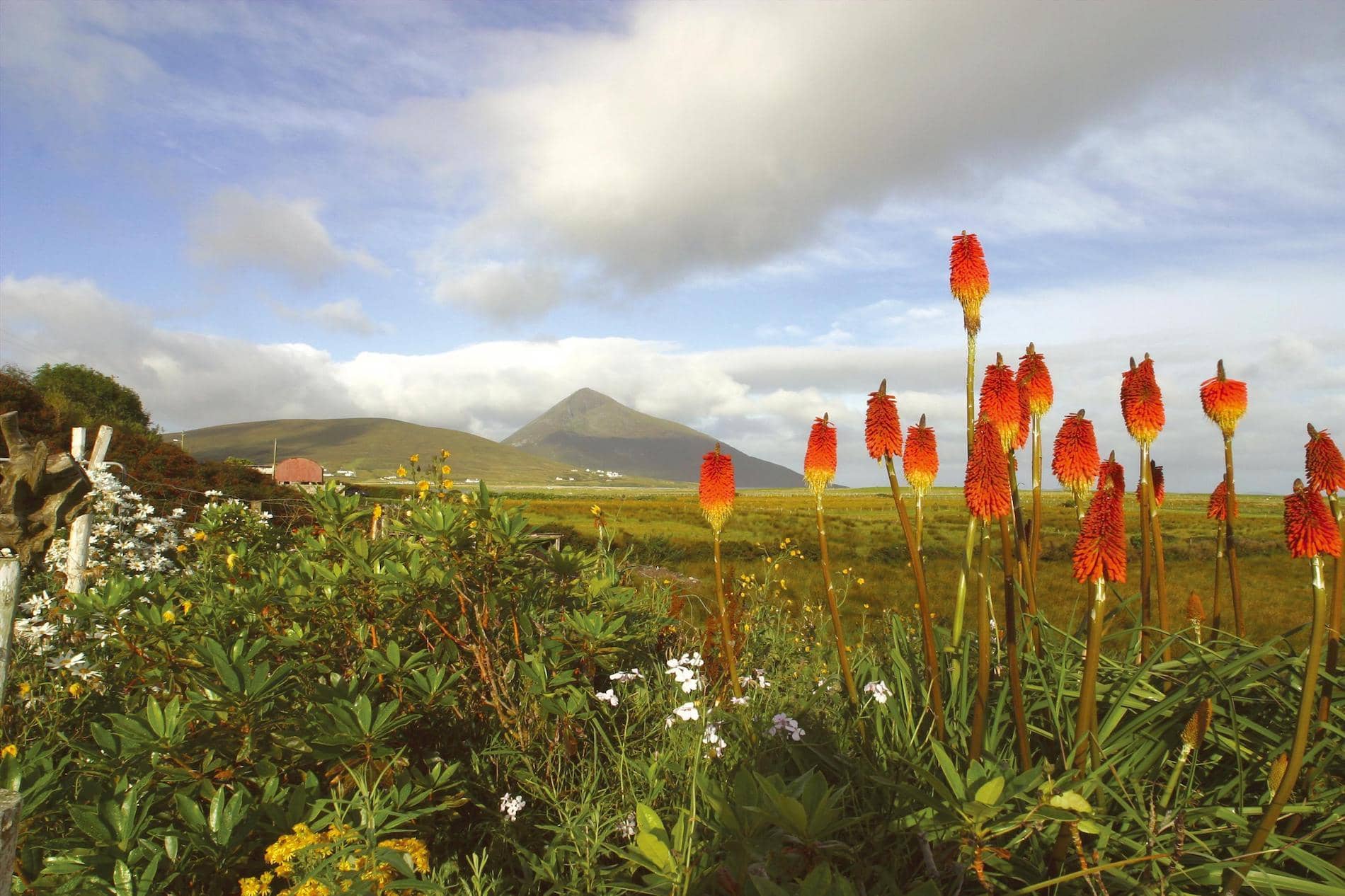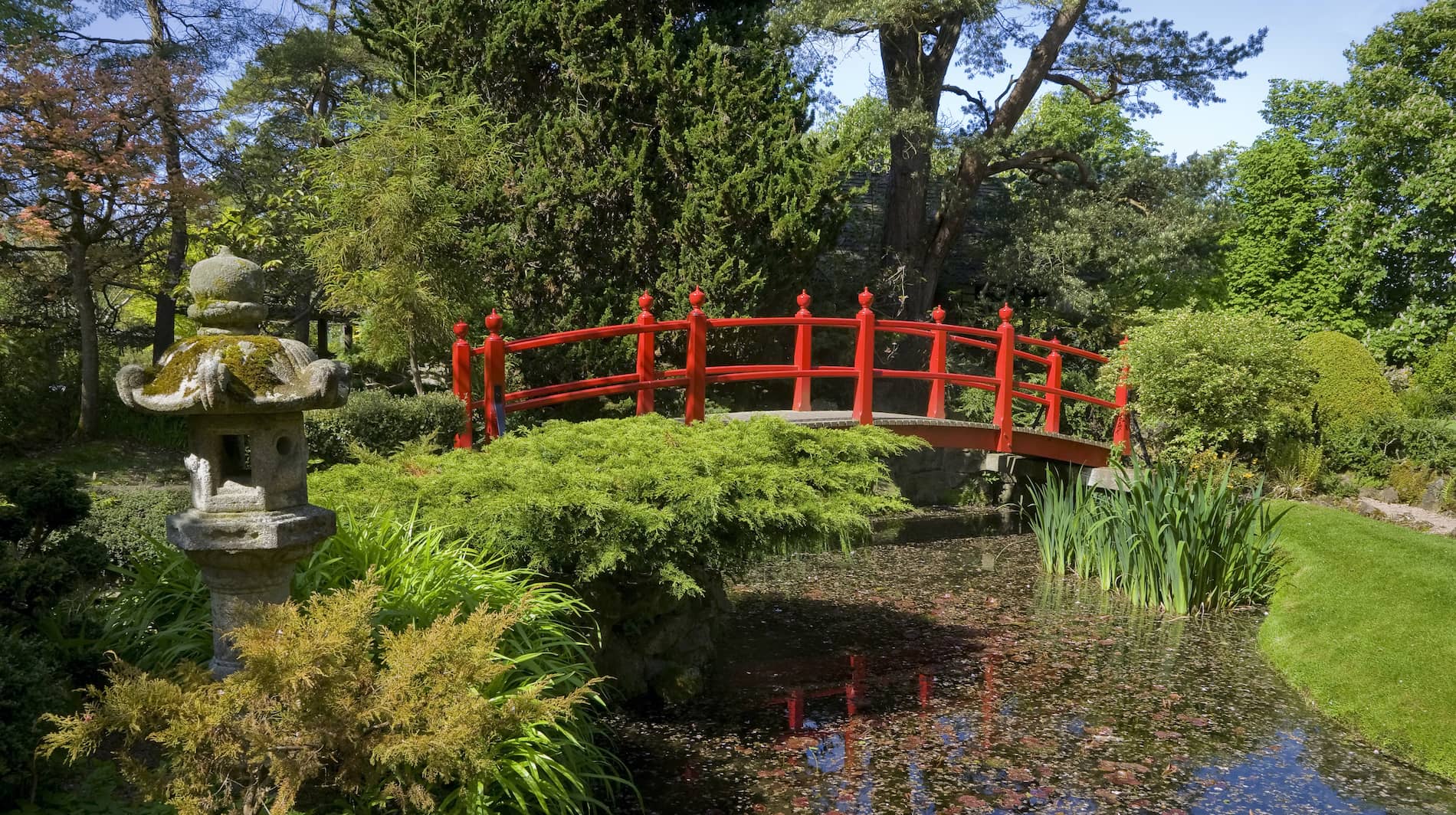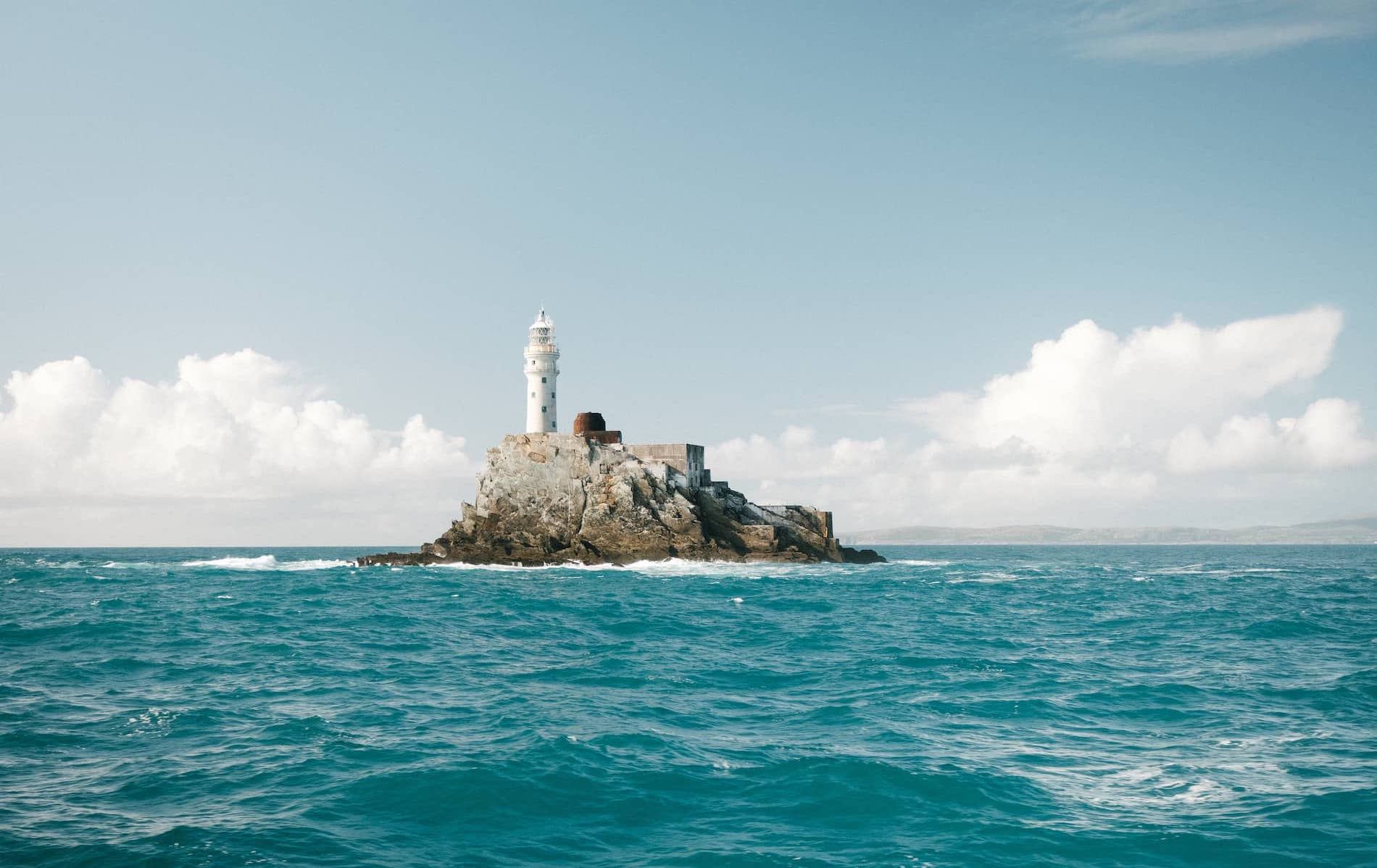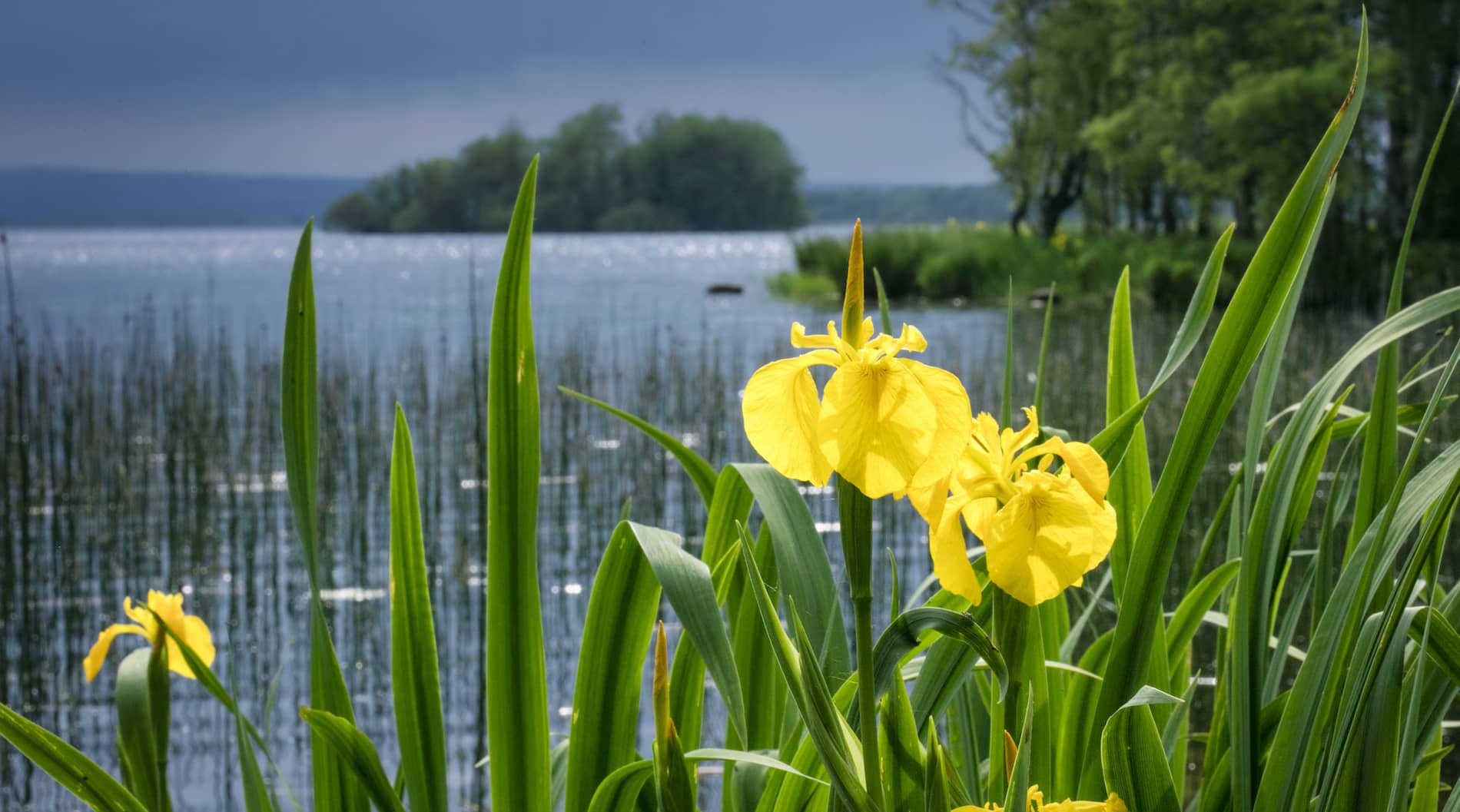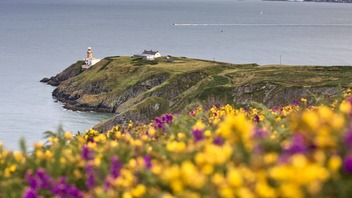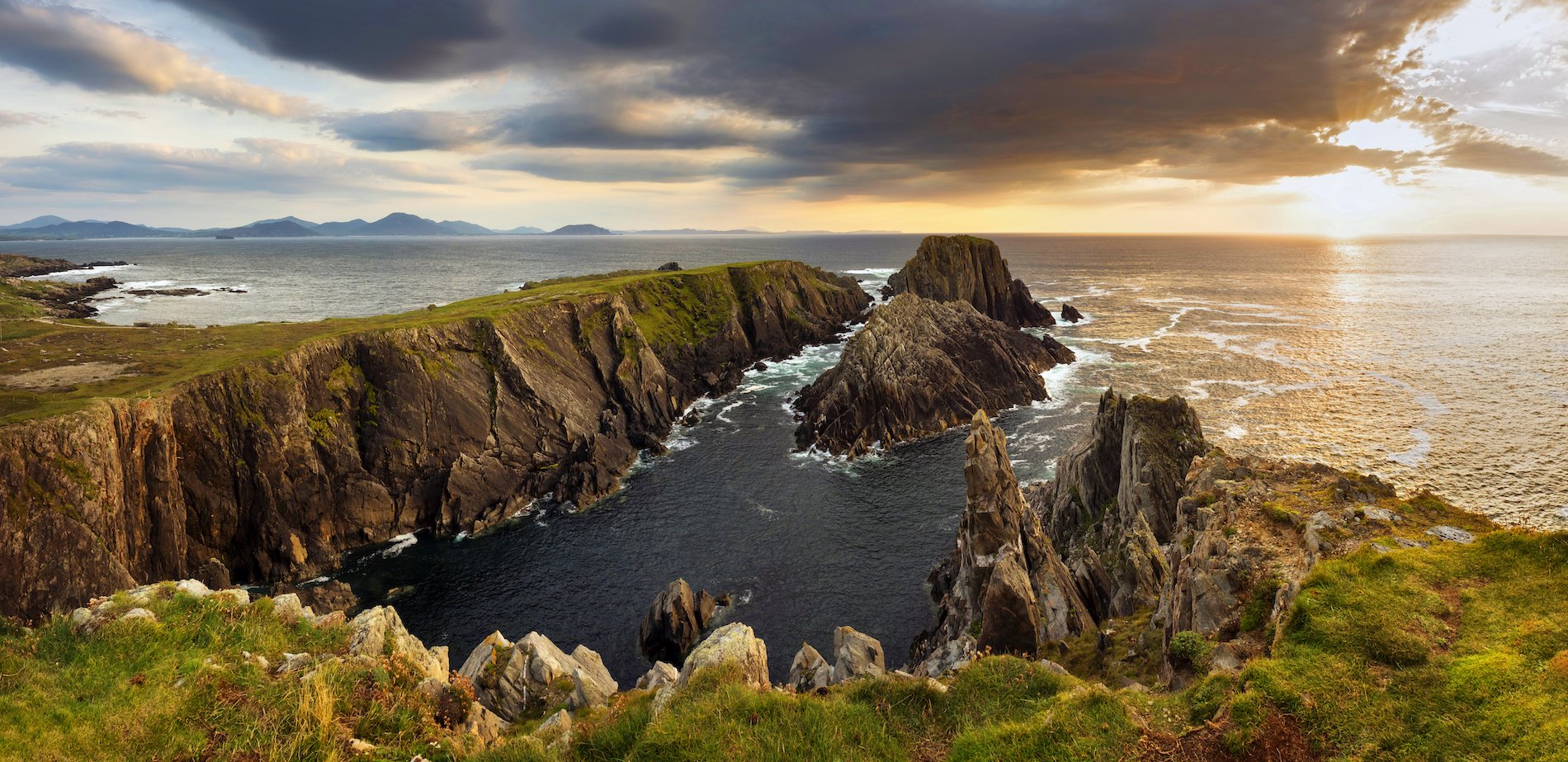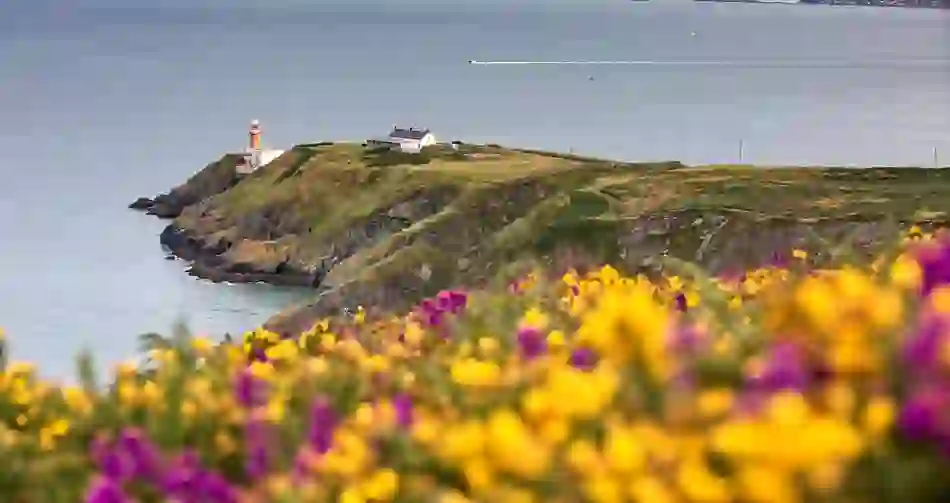
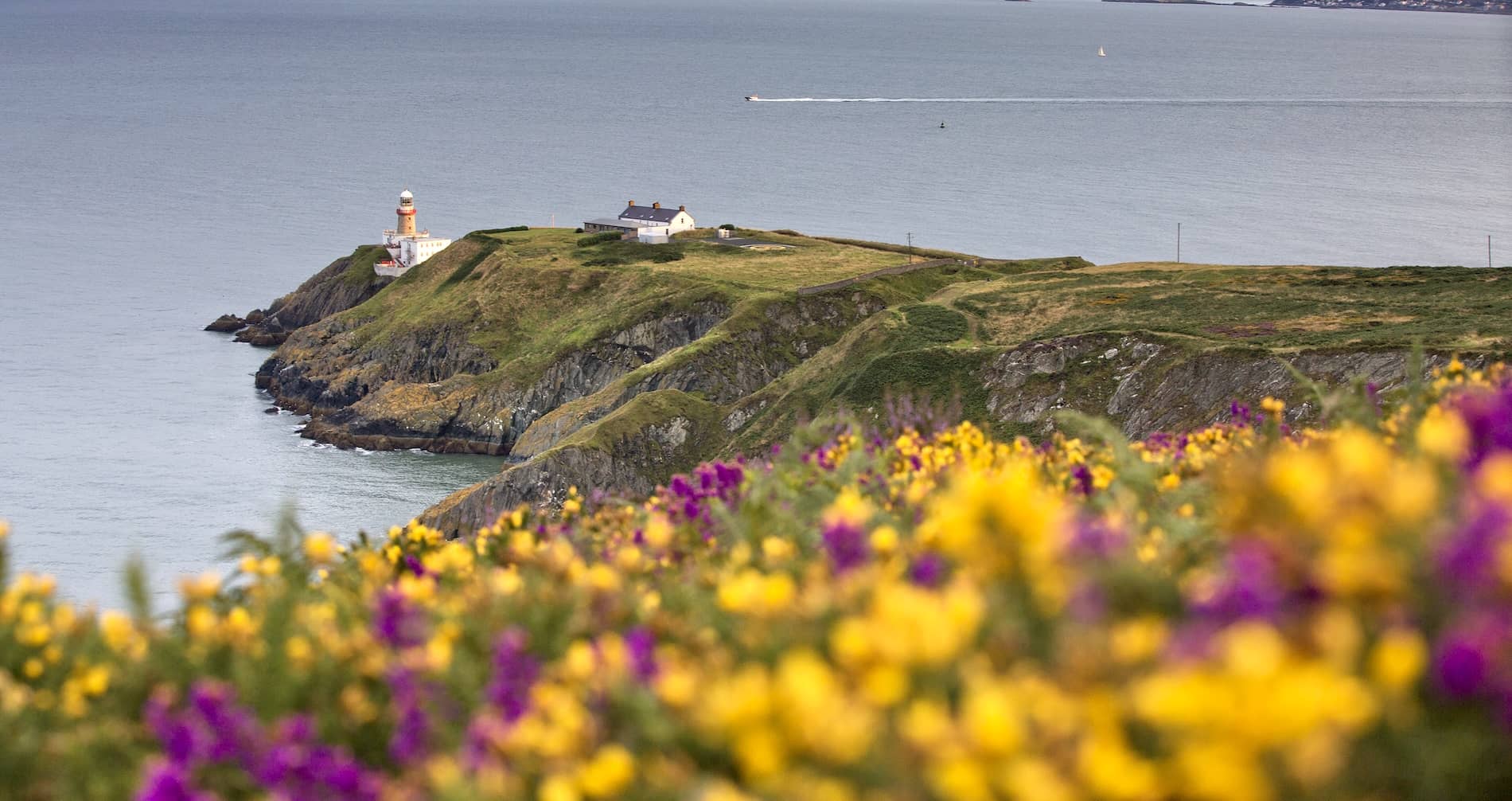
Delight in Dublin’s coastal calm

Dublin is famous for many things: the lived-in charm of traditional Irish pubs, cobbled streets that hum with history, and a passion for creativity. Wandering through the city, it feels like a place in perpetual motion, from the buzz of indie coffee shops to the melodies of buskers. But at its heart, Dublin is a breezy, laid-back destination that delights those who stay a while.
Dublin sits on the island of Ireland’s east coast and is fringed by the Irish Sea and cradled by a spectacular horseshoe-shaped bay that is designated a UNESCO Biosphere. It’s a place of stunning sea cliffs where wild goats ramble, of sandy beaches, and charming seaside towns where fishermen unload their catch in the morning.
Best of all, this serene side of Dublin is easy to access thanks to the DART – an electric rail system that hugs the coastline and offers expansive views of the Irish Sea. If you’re looking to enjoy Ireland Unrushed, there’s no better place.

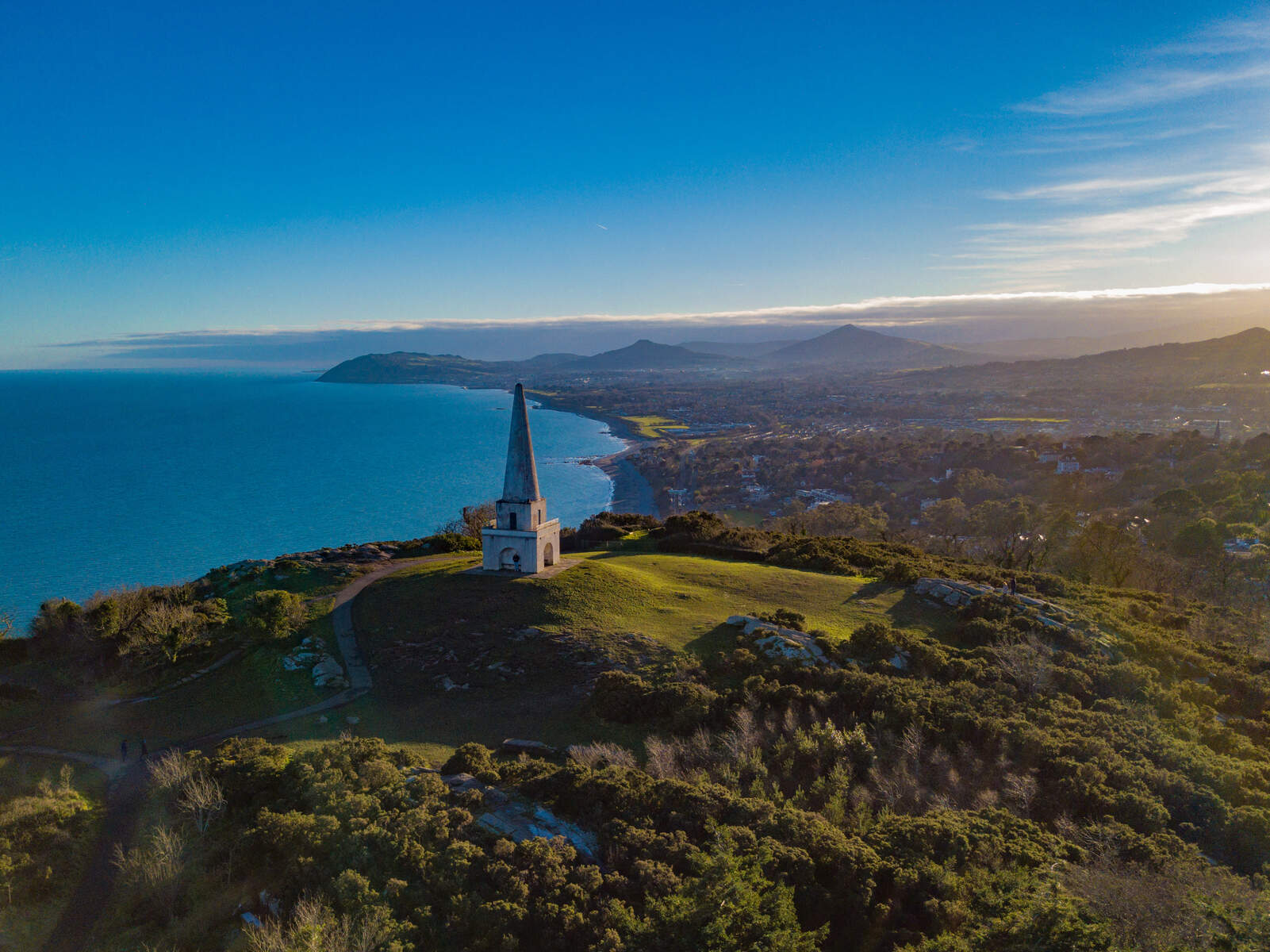
Killiney Hill, County Dublin
Walking is one of the best ways to get to know Dublin. Unlock the city’s secrets with Pat Liddy’s Walking Tours, find out why Dublin tastes great with Flavour Trails, or stroll into history with a tour of Glasnevin Cemetery, where iconic figures from Ireland’s history are buried.
Discover a different side of Trinity College, home to the Book of Kells – a magnificent 9th-century illuminated manuscript – on the Trinity Trails guided walks, or explore Dublin’s glassy canals and elegant Georgian streets with Cycle Dublin Bike Tours.


A view of Ireland's Eye from Howth, County Dublin
The more time you spend in Dublin, the more you get to discover treasures beyond the typical tourist checklist. Learn the slow art of distillation at Pearse Lyons Distillery and the Stillgarden Distillery. You might explore your creative side at SilverWorks Studio or join the locals for dinner at The Stables at The Fumbally – a café, event space and kitchen.
In Dublin’s Docklands, where the river connects with the sea, you can soak up Dublin’s musical heritage at Windmill Lane Recording Studio, or immerse yourself in emigrant history at the Jeanie Johnston replica famine ship and EPIC The Irish Emigration Museum.

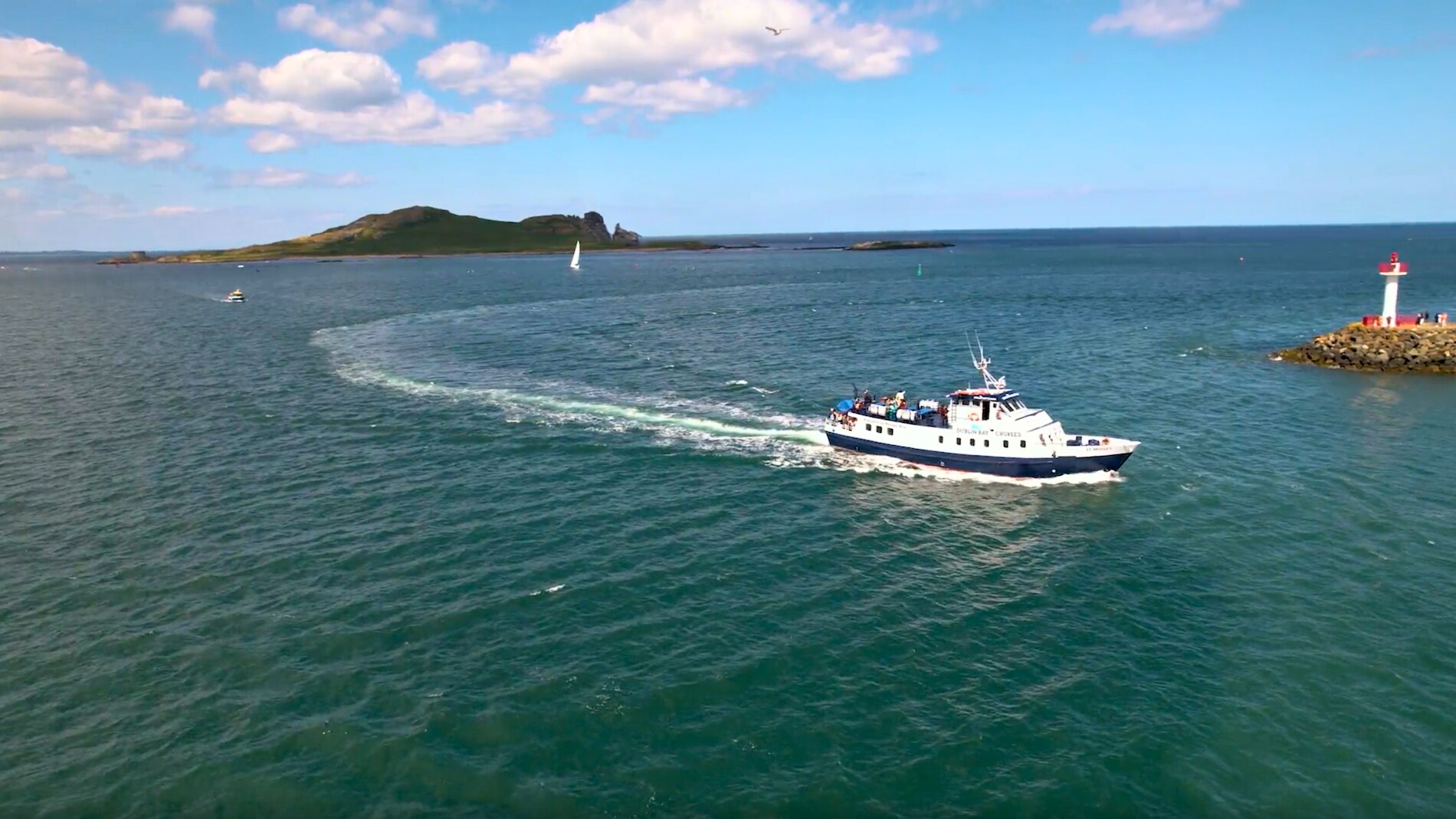
Dublin Bay Cruises, County Dublin
Ready for the delights of Dublin Bay? The Dublin Coastal Trail, which starts in the northern coastal town of Skerries and winds along the coast, is a fantastic car-free adventure with lashings of salty sea air and intriguing attractions such as Malahide Castle.
A standout stop along the trail is the seaside village of Howth, set on a rugged peninsula in Dublin Bay. Just 30 minutes from the city by DART, you can also get here by boat. Dublin Bay Cruises, powered by low-carbon HVO fuel, offers scenic sailings from the centre of Dublin, passing dramatic limestone cliffs along the way. They also run routes to Dún Laoghaire, around Dalkey Island and Killiney Bay, and between Dún Laoghaire and Howth.
Once here, stroll the pier; take a trip to Ireland’s Eye, a haven for wildlife; or laze over a slow lunch in seafood restaurants like King Sitric, Crabby Jo’s and Octopussy’s Seafood Tapas. Foodies should hit up the Dublin Coastal Craft Beer and Seafood Trail tour with Hidden Howth Experiences, for a sweeping culinary adventure of Howth’s best food and drink.
Dip into the Howth Market (weekends only) for more of Howth’s great food scene or take your skills up a level at the Howth Castle Cookery School. Set within a charming 18th-century kitchen in historic Howth Castle, it’s the perfect way to connect with the local food culture.

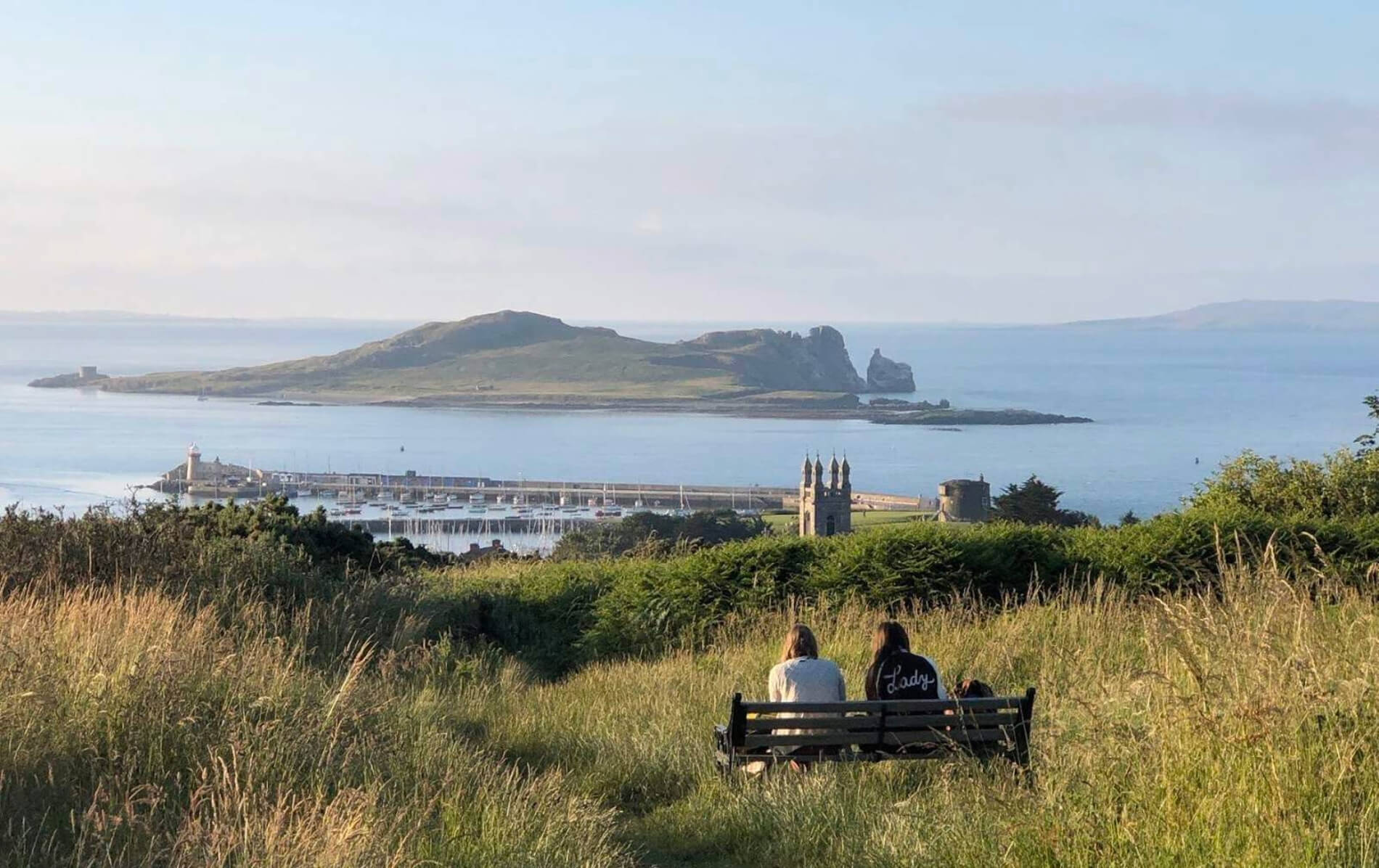
Howth, County Dublin
Next up, it’s the cliffs. Leading on a winding, vertiginous trail from the village to the spectacular lighthouse-tipped peninsula, the Howth Cliff Path is a 7.8km loop with staggering sea views. Keep an eye out for the Old Irish Goats that were reintroduced here a few years ago, as well as countless sea birds.
“We are living much more comfortably and closely with nature in Dublin Bay now than we were 30 years ago,” notes Shane O’Doherty of Shane’s Howth Adventures, who runs guided walks in the area, “and it’s something tremendous to celebrate.”

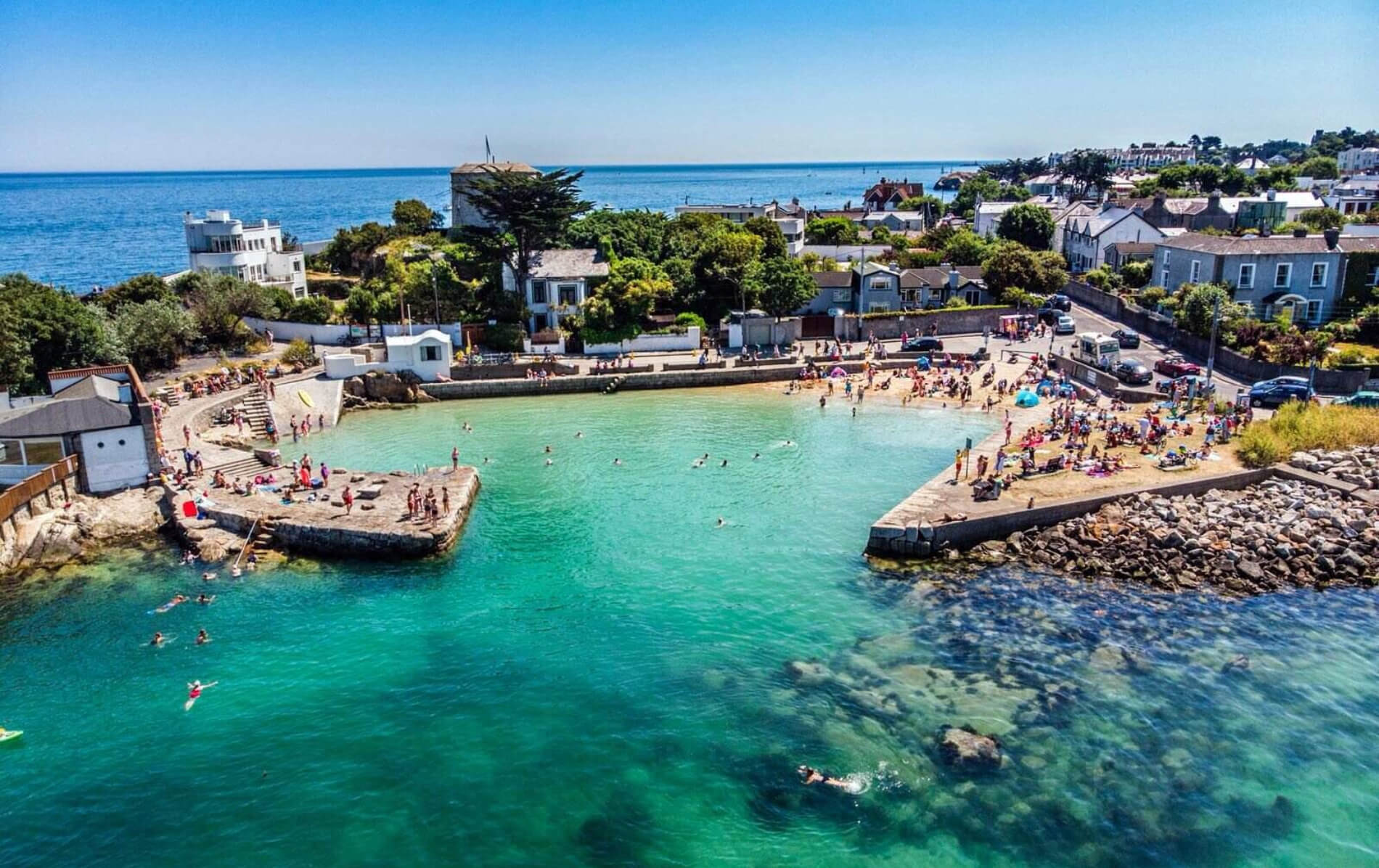
The Forty Foot, County Dublin
You could devote days to Dublin’s northern coast, walking the sand-dune-backed “Velvet Strand” at Portmarnock, enjoying the wildlife-rich North Bull Island and lingering over brunch at Póg in Clontarf, but the south side also offers a wealth of nature-filled experiences and getting there is an adventure in itself. Skimming the shoreline of Dublin Bay from the centre of the city, the southern section of the DART train is a joyous trip that weaves past coastal swimming spots, pretty harbours and along a track carved into the cliffs just above the Irish Sea. It’s one of the most beautiful commuter journeys in Europe.
The line will bring you all the way out to the charming coastal village of Greystones in County Wicklow, but there’s plenty to enjoy along the way – from Blackrock with its acclaimed restaurants, to Seapoint, where locals swim by a 19th-century Martello Tower.
One of the largest towns along the south coast, Dún Laoghaire is an attractive destination with an impressive 19th-century harbour; the elegant Victorian People’s Park; sailing clubs; and buzzy seafood restaurants. Make like a local and grab a 99 – a soft-serve ice cream cone with a chocolate flake – from Teddy’s Ice Cream Shop before walking the pier.
A short stroll from Dún Laoghaire is the Forty Foot. This year-round swimming spot was immortalised in James Joyce’s Ulysses, and the Joyce Tower Museum beside it will tell you all you need to know about Dublin’s famous author.


Killiney Hill, County Dublin
It’s an easy walk from Sandycove past Bullock Harbour to the village of Dalkey – a favourite spot with Dublin celebrities, including U2’s Bono. From here, you can walk up to Killiney Hill, where magnificent views of the coastline stop you in your tracks.
At picturesque Coliemore Harbour, catch a boat across to the uninhabited Dalkey Island (or jump on Dublin Bay Cruises from Dún Laoghaire and tour around the island and Killiney Bay). Believed to have been settled as early as 3000 BC, Dalkey Island is home to a small group of goats and a thriving seal colony.
“This is seal paradise,” explains Jenny Kilbride of Kayaking.ie, which runs award-winning tours around Dalkey Island and the coastline.
“They have their rocks to bask on, all these delicious cold-water fish to catch and no one to disturb them,” says Jenny. “We’re so lucky to have all this incredible nature just a short train ride from Dublin city.”
In Dublin, you don’t have to go far to feel far away.

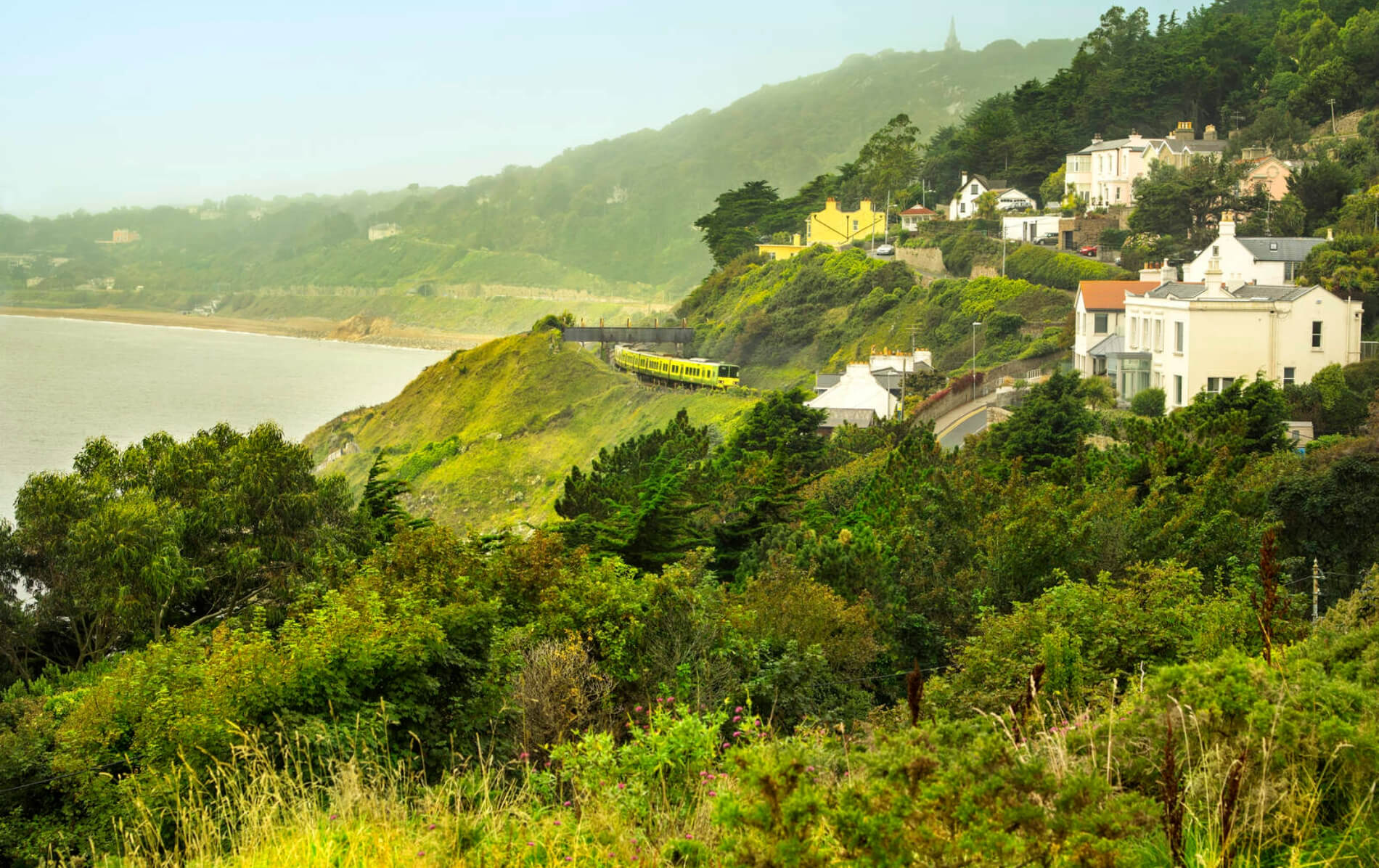
Killiney coast, County Dublin
Dublin is very walkable, but public transport options include Dublin Bus, the Luas tram and the DART. The DART runs from Howth and Malahide on the northern side to Bray or Greystones on the southern side. To enjoy the best-value public transport, buy a Leap Card at ticket machines and post offices. A Leap Card can be topped up with required amounts and used on Dublin Bus, Go-Ahead Ireland, Luas, DART and commuter rail within the Dublin “Short-hop” zone. Single journeys with a Leap Card cost from €2.
The city bike scheme is Dublin Bikes, with 1- and 3-day subscriptions available. The first 30 minutes of the journey are free; after that, rental charges apply. A coastal bicycle lane runs from Blackrock to Sandycove. Bicycles can be taken on the DART free of charge between 10am and 4pm Monday to Friday, and after 7pm. There are no restrictions at weekends.
Bleeper Shared Public Bikes offer dockless e-bicycles for rent.
Accommodation
Dublin has a wide range of sustainable accommodation options for a variety of budgets. Enjoy modern luxury at Europe’s first fully sustainable hotel, the Iveagh Garden Hotel, close to the beautiful Iveagh Gardens. Wren Urban Nest in Dublin’s Creative Quarter uses 100% sustainable electricity and water-saving technologies. Or opt for The Alex on Fenian Street, which holds a Green Key Eco Award.
Staying longer
Situated just south of Dublin, County Wicklow is a coastal beauty in Ireland’s Ancient East with magnificent attractions set within sublime landscapes, including Glendalough, Powerscourt House and Gardens and Russborough House and Parklands.





